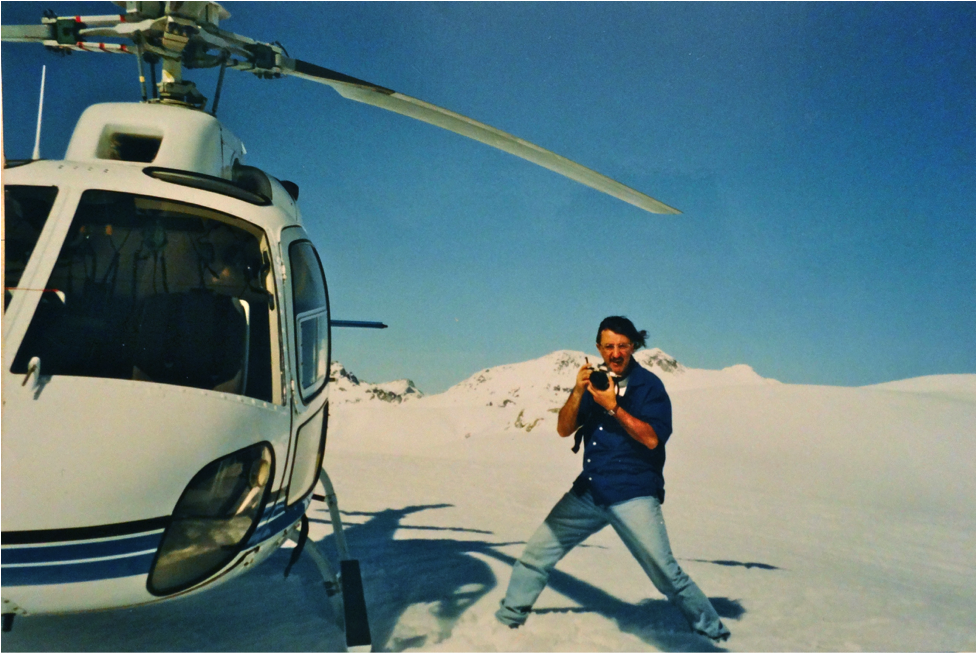 The Pemberton Ice Cap (photographing the hand-stitched panorama below)
The Pemberton Ice Cap (photographing the hand-stitched panorama below)
Taking helicopters to remote mountaintops, some covered in snow, ice and glacier lakes, others barren, remote, desolate and hot. Wind blowing in your face, sun beating down, rain, maybe hail. Stitching individual photographs together to create panoramas of landscapes before the panorama was popular. Imagining the ideal set to match the director’s script then hunting far and wide for the perfect location in places never before travelled by film production teams. This was, and is, the ever-evolving and adventurous career of film location manager Rino Pace.
On April 7th 2018, the Locations Managers Guild International (LMGI) awarded Pace the 2018 Lifetime Achievement Award at the Alex Theatre in Glendale, Los Angeles. The Awards were founded in 2003, and are vital to acknowledging and appreciating the creative work and imaginative visual artists who are the backbone of the film industry today. Based out of Vancouver BC, Pace has been in the film production industry since its conception in Vancouver around 1986. He was, and is, instrumental to the growth and success of film productions within Vancouver today. In parallel with location managing, Pace is also a photographer and visual artist.
Pace has been capturing Canada’s magnificent landscapes and topographical diversity since the early 1980s. He has been the location manager on many hit movies and television series filmed throughout North America such as “Inception”, “Deadpool”, “Unforgiven”, “Altered Carbon”, “X-Men 2”, “The Assassination of Jesse James” and “Hot Tub Time Machine”…just to name a few.
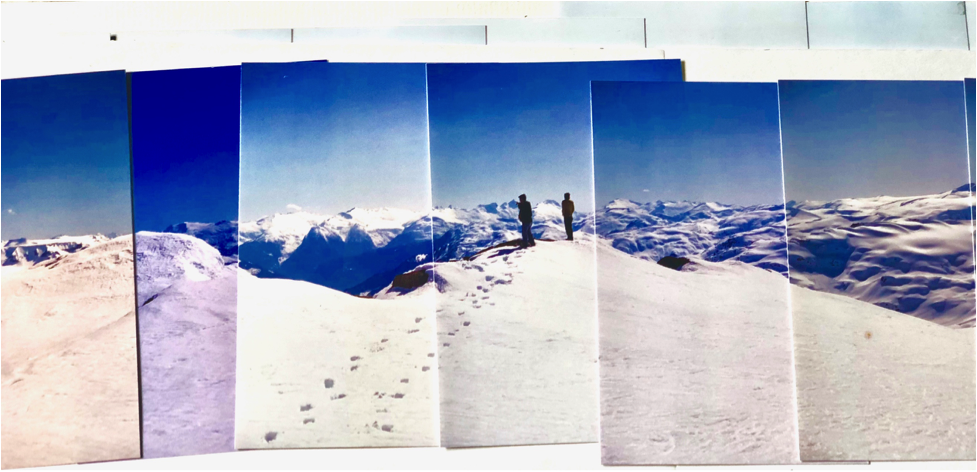 The Pemberton Ice Cap
The Pemberton Ice Cap
Without Pace, many of our favorite movies defining our childhood memories may have visually looked and felt very different. For me, this hit home when I found out the iconic yellow Burnford family home in “Homeward Bound: The Incredible Journey” was Pace’s sister-in-law’s house. I know… I know… you’re thinking, “after all the cool movies Pace worked on why did you reference the Burnford family home in ‘Homeward Bound’?” But honestly, that was a watershed moment for me and I can’t imagine watching “Homeward Bound” without that classic house! So needless to say, I was really looking forward to having this opportunity to interview him and learn more about his creative role within the film industry and how he came to find and photograph stunning, adaptable, remote, and diverse locations across North America.
Hi Rino! Congratulations on receiving the 2018 Lifetime Achievement Award from the Location Managers Guild International (LMGI). How does it feel to be honoured by the LMGI?
Thank you! I felt extremely humbled. I know so many talented people, past and present, on this side of the industry, that being picked was truly an honor. I am very lucky to have worked with so many brilliant artists in this industry that make me look good.
How did you become involved in the film industry? When and where did you start your career?
I began my career in the theatre in Calgary, Alberta. Calgary then was beginning to attract productions that wanted to take advantage of the spectacular big sky prairie and Rocky Mountain landscapes. During that phase, I began working in Locations and thus honed the craft of locations. Eventually, I moved to Vancouver, working on the TV series “Airwolf”, one of the first shows to establish Vancouver as a TV production hub.
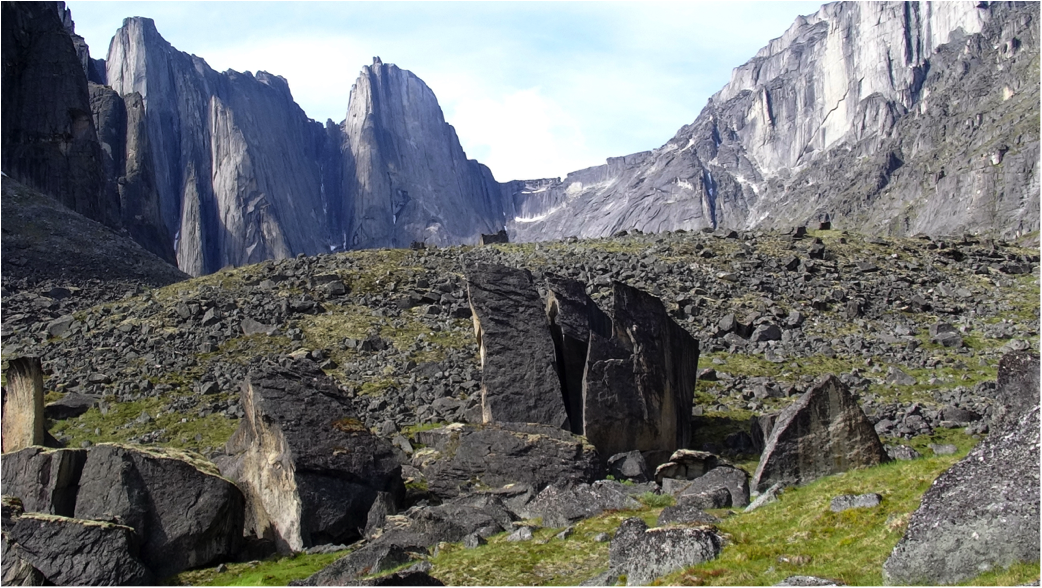 The “Cirque of the Unclimbables” located near the border of Canada’s Northwest Territories and Yukon
The “Cirque of the Unclimbables” located near the border of Canada’s Northwest Territories and Yukon
How did you find the process of advancing your career within the film industry? What advice would you give people who are wanting to move up within the film industry today?
The advancement process in the early days was very quick. With the birth of the industry here in Vancouver in 1986, people moved into new positions without having any experience, as the number of projects arriving in Vancouver grew rapidly. Today, starting in the business is a much different story. With over 25,000 technicians servicing a $2 billion a year industry, getting a foothold in the business is difficult. Once in, advancement is slow and tedious. My suggestion for anyone trying to break into the industry today is to be as clear as possible about the path you want to travel. Once you are in a particular department, it’s difficult to transition to another. I suggest coming to the industry with education and training.
Being a location manager involves a lot of creativity and imagination, you are responsible for finding and capturing a landscape in a way which will bring directors into it with you, envisioning what you see possible in relation to their script. Would you consider it an art practice? For example, your relationship to photography and how it’s evolved throughout the years?
People often ask me – what are the coolest places that you’ve seen or visited. I have to say, my favorites are definitely the big wide open landscapes of the prairies, Rockies, and the tundra of the north. Visiting primordial landscapes that few humans have tread upon, as well as, on the opposite spectrum, filming within marginalized communities, frames our varied beliefs of what art can be. In these settings, we recognize our place within the planet. As location managers, our eyes have connected us to the stunningly beautiful, as well as the unfortunately sad and troubled places. It is those perspectives and observations that manifest in our photographs. It is these images that stimulate the creative call of the director, summoning his artistic beliefs and how they correlate to his story.
Have you always been interested in photography, even before your career in the film industry? Also, how has capturing landscapes evolved with the rise of technology? Let’s say, for example, the process of taking a panoramic photo?
My photographic interests certainly evolved while in the business. I think, my love of big wide open landscapes comes from being born and growing up in Fernie, B.C. The town is a stunning jewel set in a valley amongst the Rockies. I may not have had the ability to photograph this landscape as a young man but that setting has shaped how I view and consider a location to present to a director. Throughout my career, the presentation of photographs to the production designer and director is one of the most important first steps in the moving making process. Early on, we began by taking individual photographs and taping them together, sometimes creating panoramic photographs that were six feet long. These photos were placed in folders and then presented. Today, of course, these panoramas are shot effortlessly and then presented on a big screen.
 Hand-stitched panorama of Ashcroft, British Columbia
Hand-stitched panorama of Ashcroft, British Columbia
Can you touch on how you pioneered promoting Canada’s diverse landscape as an opportunistic production environment? For example, your role in bringing the film industry to the Alberta Badlands with movies such as “Unforgiven” and “Shanghai Noon”.
As producers saw the value of filming in Western Canada, I began travelling between BC and Alberta. I worked with Ed Zwick on “Legends of the Fall”, and Gillian Armstrong on “Little Women”. Along with new location discoveries, I established processes that set the pattern for the throngs of productions that would follow. After “Macgyver” and the Cannel TV explosion, the handshakes of location management were replaced with standards and protocols that are the models for sustainability and resource management for location managers across the country. My location managing style became familiar in Canada’s Wild West and blossomed from no rules or standards, into an efficient, thriving community. I gained a reputation of respect and compromise which fulfils the key creatives and sustains filming in the provinces.
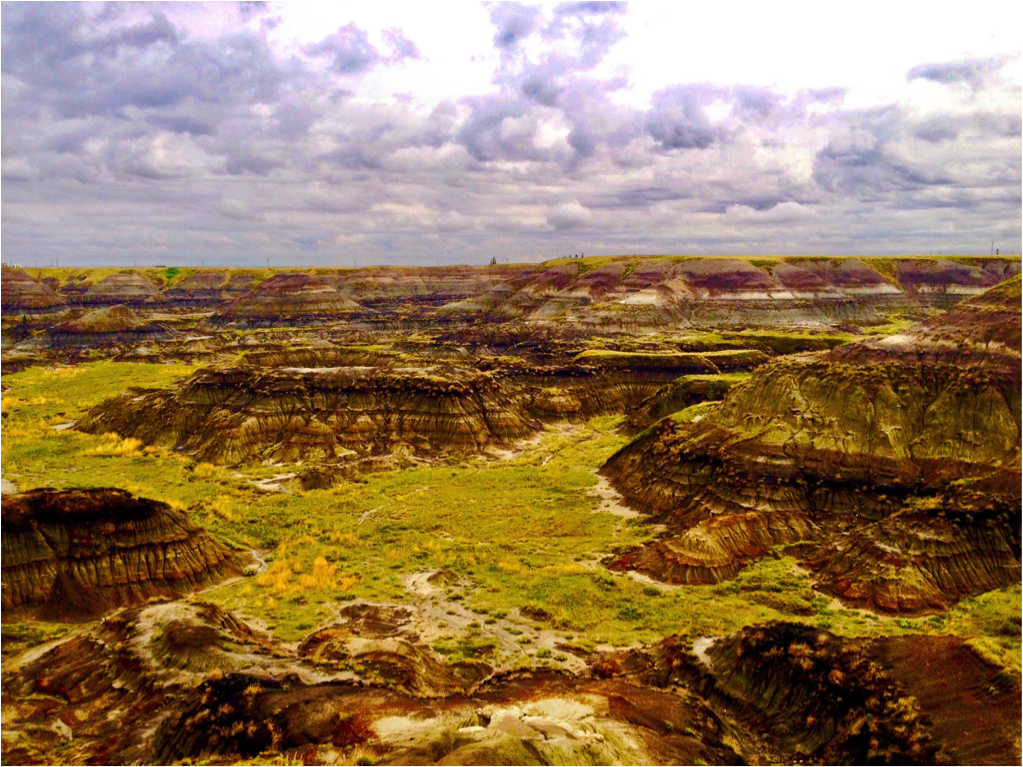 Alberta Badlands
Alberta Badlands
You’ve shot all across North America with a lot of big-name movies such as “The Big Year”, “Inception”, “Hot Tub Time Machine”, “The Assassination of Jesse James”, “I Robot”, “X-Men 2”, “Deadpool”, “Unforgiven”, “Shanghai Noon” and television series such as “Altered Carbon”…just to name a few. Do you have productions, locations and/or directors which are most memorable to you?
I’ve certainly learned over the years that the center of power on a film generally lies in someone’s hands. It could be the director, the studio, producer or an actor. Whoever holds the power, drives the creative force. Depending on who that is, can greatly affect the creative vision of the project. I realized, much later in my career, that working with Clint Eastwood on “Unforgiven” was one of the few films where the director had absolute power and influence. He was in charge of all aspects of delivering the film to the studio. Today films have studio executives and producers who all play a role in the decision making process. My experience has been, that the more people involved in the decision making artistic process, the greater chance of that vision changing.
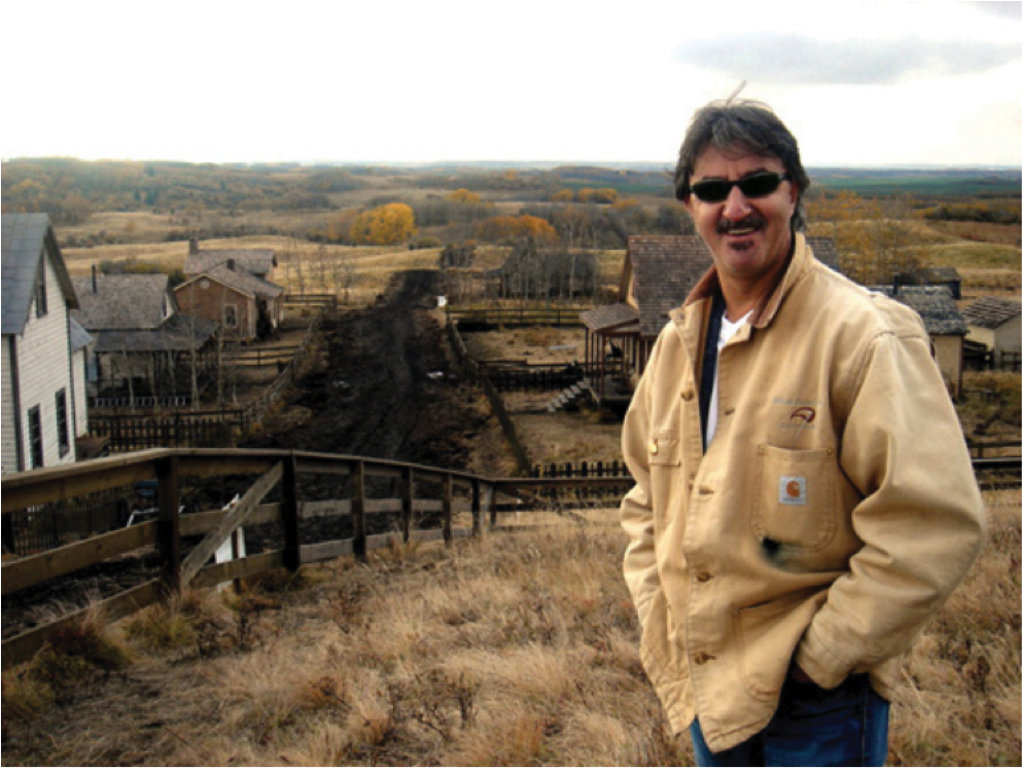 A town built (on land east of Calgary, Alberta) for “The Assassination of Jesse James”
A town built (on land east of Calgary, Alberta) for “The Assassination of Jesse James”
You mentioned how Clint Eastwood was one of the few directors in your experiences who ‘had absolute power and influence’ within his movies. Can you touch on this and how your role of location manager fits in with the evolving conglomeration of film production politics?
Referring back to my answer regarding “someone always has power on a film”, I at times, walk a very fine line between producers and director. Negotiations between these two groups is an ongoing challenge during filming. The production side of things generally seeks to reduce expenditures, while the director, [the artist], only desires that his vision is realized without necessarily paying too much attention to expenditures. Each production definitely brings its own unique brand of excitement.
– Maddison Miller
More about the LMGI:
The Location Managers Guild International (LMGI) is an organization of experienced career professionals in the Motion Picture, Television, Commercial and Print production industries. LMGI members are dedicated to the establishment of professional standards of personal conduct, safety on the set and business ethics. They support the formation of strong links with business members, governmental agencies and local communities. The Guild promotes awareness of the goals and achievements of members to the general public and within the industry through creative, educational and philanthropic programs.
